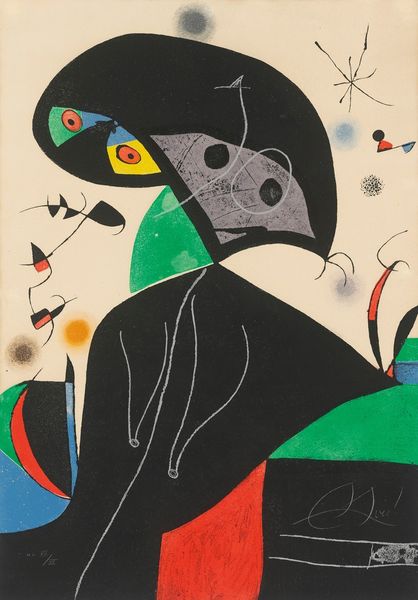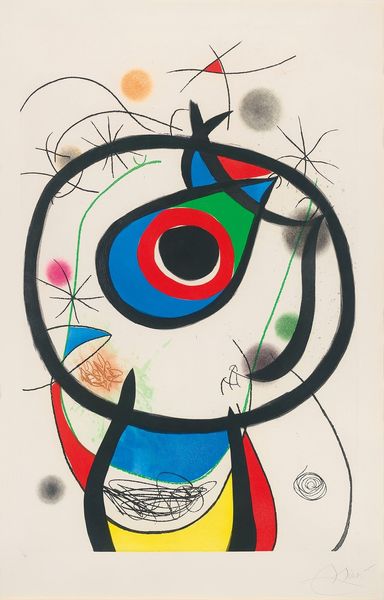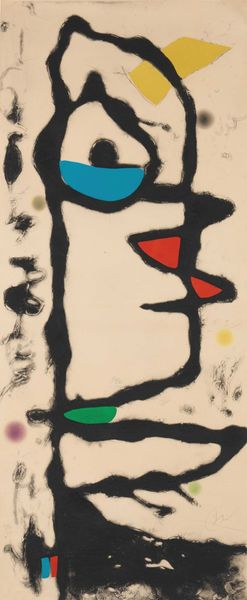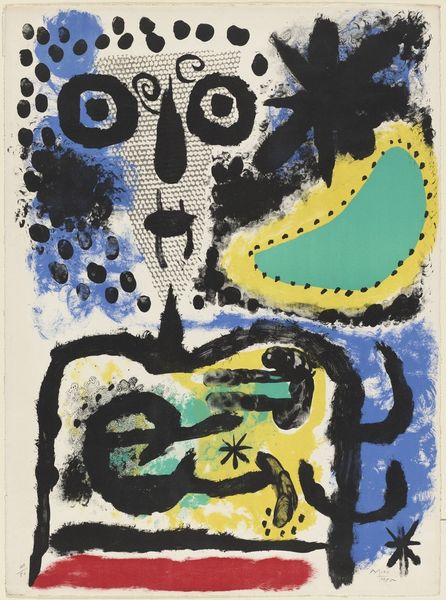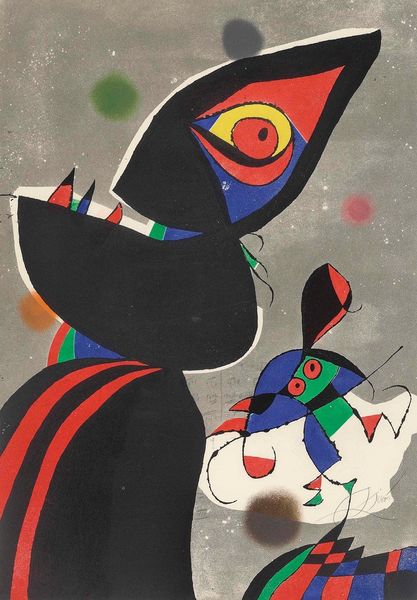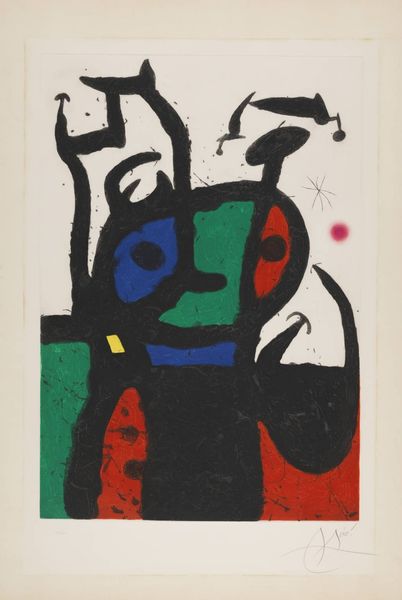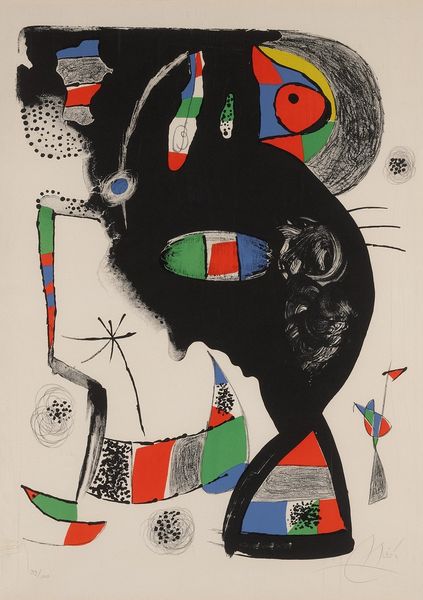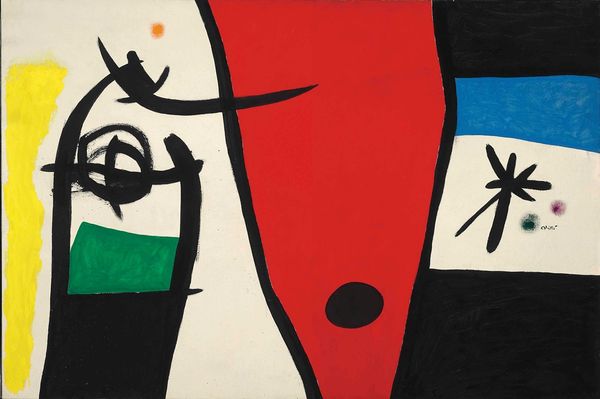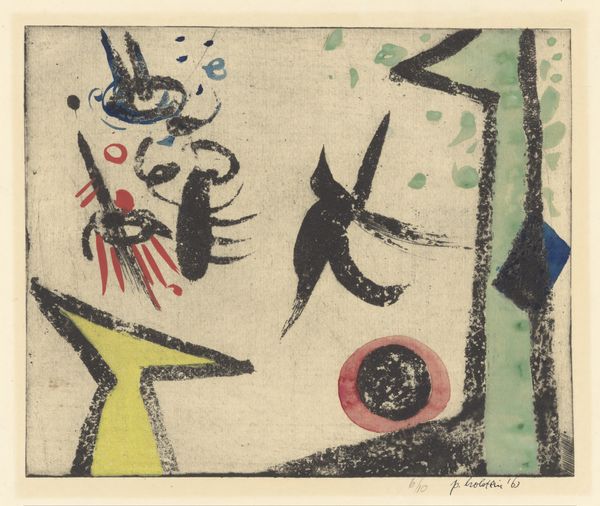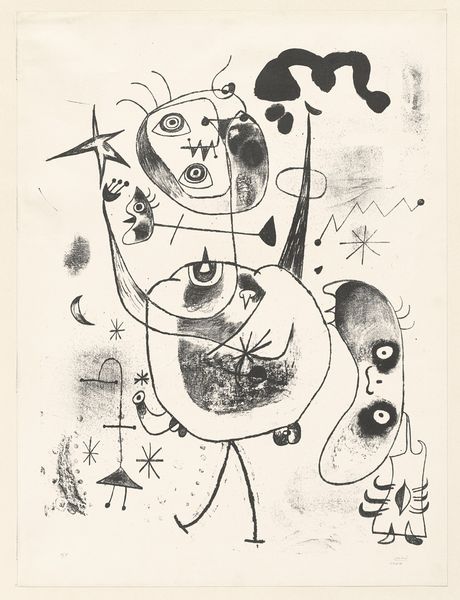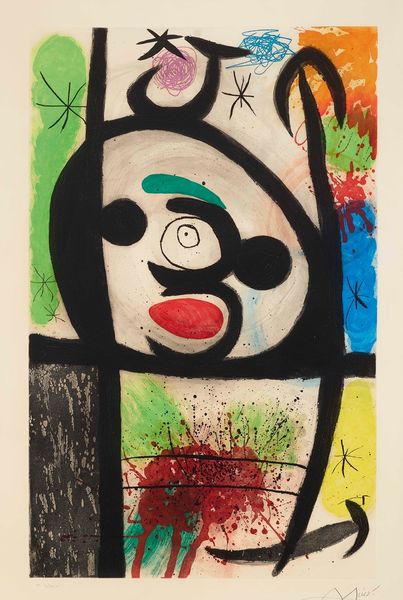
Copyright: Modern Artists: Artvee
Curator: This mixed-media lithograph by Joan Miró, created in 1971, is entitled "Homenatge a Joan Prats." Editor: Well, my first impression is that it feels… playful but also grounded. There's a sense of whimsy in the floating shapes, the bright colors, and almost childlike rendering. Yet the heavy black forms at the base give it weight. Curator: Indeed. Joan Prats, whom this piece honors, was a close friend and early supporter of Miró, deeply involved in the artistic and intellectual circles of Barcelona. We see that influence of the city and art world. The geometric forms, the explosions of color against the negative space are meant to be a reflection of Prats’ spirit. Editor: Looking at it from today’s context, those forms and colors jump out with energy. However, do you think, looking back, there is a way to interpret that black? Does it provide shadows against the celebration? Is it mourning that he creates these images? Curator: While black can, of course, suggest melancholy, here I see it more as foundational, the grounding upon which Prats built so much within Barcelona's cultural life, as well as Miro's personal life. It allowed the brighter elements to truly come alive. The stark contrasts serve to make the abstract shapes pop. The splashes remind you of watercolor techniques. And what’s remarkable, even while these marks and images might look primitive, Miro’s surrealist roots speak strongly. Editor: You are absolutely correct. This piece evokes questions, conversations of past times through the work, yet can be molded through current intersectional lenses, and become applicable in our modern day. A push and pull that really stays with you. It makes us think what impact it made, who felt they could or could not be involved with Miro's, and Prat’s, artistic circles? Curator: It is difficult to truly pinpoint a precise and perfect interpretation, as it has already lived in its own contexts for 50 years. The work lives on, though. Editor: That is why, when encountering pieces such as this, context is essential, the history matters, and will continue to develop within our current times.
Comments
No comments
Be the first to comment and join the conversation on the ultimate creative platform.
